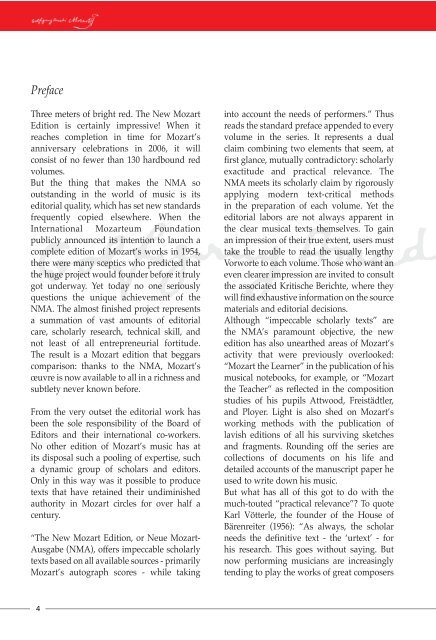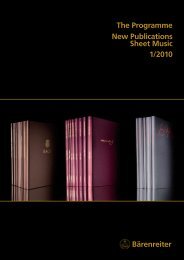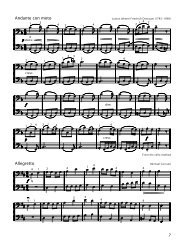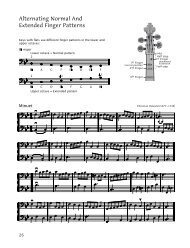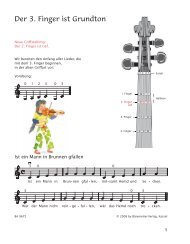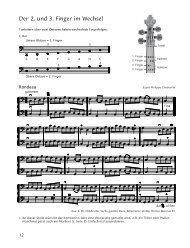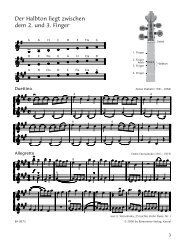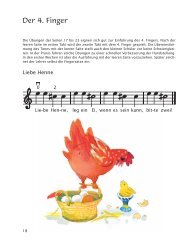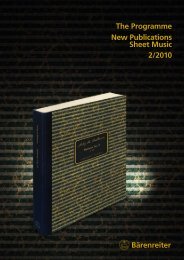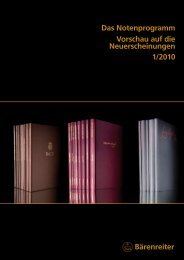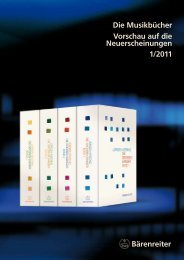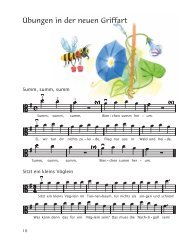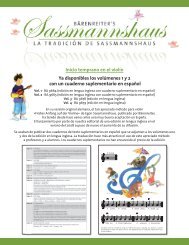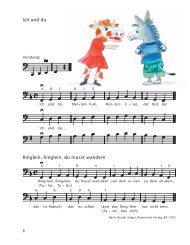Create successful ePaper yourself
Turn your PDF publications into a flip-book with our unique Google optimized e-Paper software.
Preface<br />
Three meters of bright red. The New Mozart<br />
Edition is certainly impressive! When it<br />
reaches completion in time for Mozart’s<br />
anniversary celebrations in 2006, it will<br />
consist of no fewer than 130 hardbound red<br />
volumes.<br />
But the thing that makes the NMA so<br />
outstanding in the world of music is its<br />
editorial quality, which has set new standards<br />
frequently copied elsewhere. When the<br />
International Mozarteum Foundation<br />
publicly announced its intention to launch a<br />
complete edition of Mozart’s works in 1954,<br />
there were many sceptics who predicted that<br />
the huge project would founder before it truly<br />
got underway. Yet today no one seriously<br />
questions the unique achievement of the<br />
NMA. The almost finished project represents<br />
a summation of vast amounts of editorial<br />
care, scholarly research, technical skill, and<br />
not least of all entrepreneurial fortitude.<br />
The result is a Mozart edition that beggars<br />
comparison: thanks to the NMA, Mozart’s<br />
œuvre is now available to all in a richness and<br />
subtlety never known before.<br />
From the very outset the editorial work has<br />
been the sole responsibility of the Board of<br />
Editors and their international co-workers.<br />
No other edition of Mozart’s music has at<br />
its disposal such a pooling of expertise, such<br />
a dynamic group of scholars and editors.<br />
Only in this way was it possible to produce<br />
texts that have retained their undiminished<br />
authority in Mozart circles for over half a<br />
century.<br />
“The New Mozart Edition, or Neue Mozart-<br />
Ausgabe (NMA), offers impeccable scholarly<br />
texts based on all available sources - primarily<br />
Mozart’s autograph scores - while taking<br />
4<br />
into account the needs of performers.” Thus<br />
reads the standard preface appended to every<br />
volume in the series. It represents a dual<br />
claim combining two elements that seem, at<br />
first glance, mutually contradictory: scholarly<br />
exactitude and practical relevance. The<br />
NMA meets its scholarly claim by rigorously<br />
applying modern text-critical methods<br />
in the preparation of each volume. Yet the<br />
editorial labors are not always apparent in<br />
the clear musical texts themselves. To gain<br />
an impression of their true extent, users must<br />
take the trouble to read the usually lengthy<br />
Vorworte to each volume. Those who want an<br />
even clearer impression are invited to consult<br />
the associated Kritische Berichte, where they<br />
will find exhaustive information on the source<br />
materials and editorial decisions.<br />
Although “impeccable scholarly texts” are<br />
the NMA’s paramount objective, the new<br />
edition has also unearthed areas of Mozart’s<br />
activity that were previously overlooked:<br />
“Mozart the Learner” in the publication of his<br />
musical notebooks, for example, or “Mozart<br />
the Teacher” as reflected in the composition<br />
studies of his pupils Attwood, Freistädtler,<br />
and Ployer. Light is also shed on Mozart’s<br />
working methods with the publication of<br />
lavish editions of all his surviving sketches<br />
and fragments. Rounding off the series are<br />
collections of documents on his life and<br />
detailed accounts of the manuscript paper he<br />
used to write down his music.<br />
But what has all of this got to do with the<br />
much-touted “practical relevance”? To quote<br />
Karl Vötterle, the founder of the House of<br />
Bärenreiter (1956): “As always, the scholar<br />
needs the definitive text - the ‘urtext’ - for<br />
his research. This goes without saying. But<br />
now performing musicians are increasingly<br />
tending to play the works of great composers


